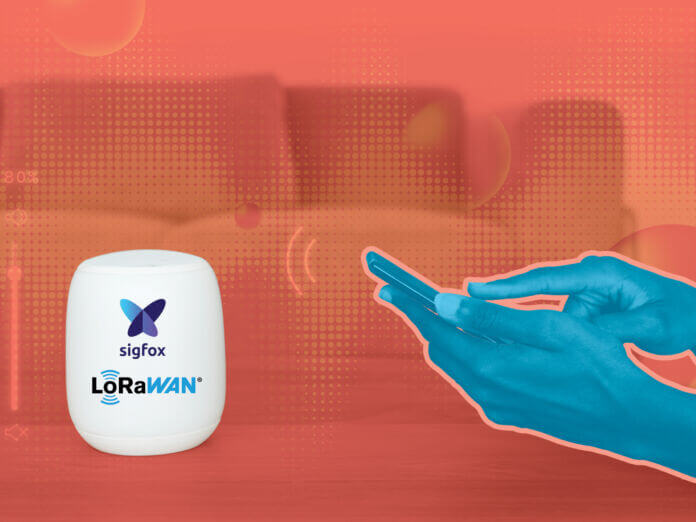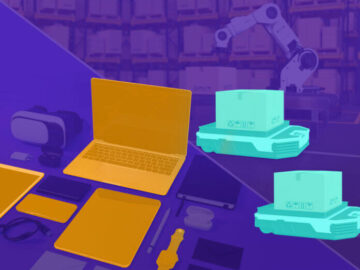
One of the most frequently asked questions when it comes to convergence is “How to implement convergence for a Sigfox and LoRaWAN device/solution?”
There are multiple IoT stakeholders in the IoT ecosystem that have already ventured what I would call “Hybridation” – the deployment of hybrid schemes in their IoT devices. This process has often been reinvented by each actor depending on the field they play in, introducing barriers to achieving a swift go-to-market strategy and emphasizing vertical application integration.
Business Value in Sigfox and LoRaWAN Convergence
#1: Device Manufacturers
Convergence increases the cost-effectiveness of their product portfolio by allowing them to access a broader market with one single SKU product catering to both technologies.
#2: IoT Service Providers
Convergence also allows them to expand their coverage with a single IoT device/ solution.
#3: IoT Customers
End-users who want to leverage the same static IoT device connecting the best available LoRaWAN or Sigfox coverage depending on geographies, and not be at risk when the chosen network experiences outages or is not available (e.g., international asset tracking with mobile devices seeking the best available coverage where they are used)
Benefits of Sigfox & LoRaWAN Dual Mode
There are several benefits to the implementation of Sigfox and LoRaWAN dual mode. Expanded coverage, including LoRaWAN satellite access by SIgfox and LoRaWAN Customers in multiple geographies, is one. Another benefit is the ability of one single SKU device for both technologies to reduce costs. Dual mode also increases SLA and network performance/resilience where Sigfox and LoRaWAN are concurrently deployed.
How to Implement the Sigfox & LoRaWAN Dual Mode
Step 1: Pick a Compatible IoT Chipset
- Semtech LR1110 LR1120, LR1121, SX126x
- ST Micro STM32WL5
- IoT modules Murata LoRaWAN Modules, LSM 110A
Step 2: Integrate the Open-Source Sigfox & LoRaWAN Firmwares onto Your Device’s External Microcontroller (MCU).
Additionally, the Sigfox implementation scheme on Semtech’s SX12xx Chipsets will be released on GitHub by the end of 2023.
Step 3: Integrate, Certify, & Test
Step 4: Update the Device Application Firmware
Lastly, update the device application firmware (on edge) OR/AND the IoT cloud middleware with the best “technology selection scheme,” adapted to your use case:
- Choose the best available Network connectivity (Sigfox or LoRaWAN) at the provisioning phase if the device is static (switch to the best available network connectivity).
- OR dynamically choose the best available connectivity if the device is mobile (each transmission seeks the best available Network connectivity).
- OR connect Sigfox and LoRaWAN concurrently (network overlap) to increase Network capacity and resilience.
The smart network technology selection can be implemented on edge (device firmware) or in the cloud (data extraction middleware).
- SEO Powered Content & PR Distribution. Get Amplified Today.
- PlatoData.Network Vertical Generative Ai. Empower Yourself. Access Here.
- PlatoAiStream. Web3 Intelligence. Knowledge Amplified. Access Here.
- PlatoESG. Carbon, CleanTech, Energy, Environment, Solar, Waste Management. Access Here.
- PlatoHealth. Biotech and Clinical Trials Intelligence. Access Here.
- Source: https://www.iotforall.com/how-to-implement-device-convergence-for-sigfox-lorawan
- :has
- :is
- :not
- :where
- 1
- 13
- 14
- 2023
- 700
- 9
- a
- ability
- access
- achieving
- across
- adapted
- Allowing
- allows
- already
- also
- and
- Another
- Application
- ARE
- AREA
- AS
- asked
- asset
- At
- available
- barriers
- BE
- been
- benefit
- benefits
- BEST
- both
- broader
- by
- call
- CAN
- Capacity
- case
- catering
- certify
- Choose
- chosen
- Cloud
- CO
- comes
- compatible
- Connect
- Connecting
- Connectivity
- Convergence
- Costs
- coverage
- Customers
- data
- Data Platform
- Depending
- deployed
- deployment
- Design
- device
- Devices
- dynamically
- e
- each
- ecosystem
- Edge
- emphasizing
- end
- Ether (ETH)
- Expand
- expanded
- Experiences
- external
- extraction
- field
- For
- frequently
- geographies
- GitHub
- Go-To-Market
- Have
- How
- How To
- HTML
- HTTPS
- Hybrid
- i
- if
- implement
- implementation
- implemented
- in
- Including
- Increase
- Increases
- integrate
- integration
- International
- introducing
- iot
- IoT Device
- iot devices
- IT
- jpg
- Leverage
- LoRaWAN
- manufacturing
- Market
- massive
- max-width
- MCU
- Mobile
- mobile devices
- Mode
- most
- multiple
- my
- network
- of
- often
- on
- ONE
- onto
- open source
- or
- Outages
- phase
- pick
- platform
- plato
- Plato Data Intelligence
- PlatoData
- Play
- portfolio
- power
- process
- Product
- product design
- proven
- provider
- Questions
- reduce
- released
- resilience
- Risk
- salesforce
- same
- satellite
- scheme
- schemes
- seeking
- Seeks
- selection
- service
- Service Provider
- Services
- several
- single
- smart
- solution
- st
- stakeholders
- static
- Strategy
- such
- SVG
- SWIFT
- Switch
- Technologies
- Technology
- that
- The
- their
- Them
- they
- this
- to
- Tracking
- Update
- use
- use case
- used
- value
- vertical
- vp
- want
- What
- when
- WHO
- wide
- will
- with
- would
- Your
- zephyrnet











